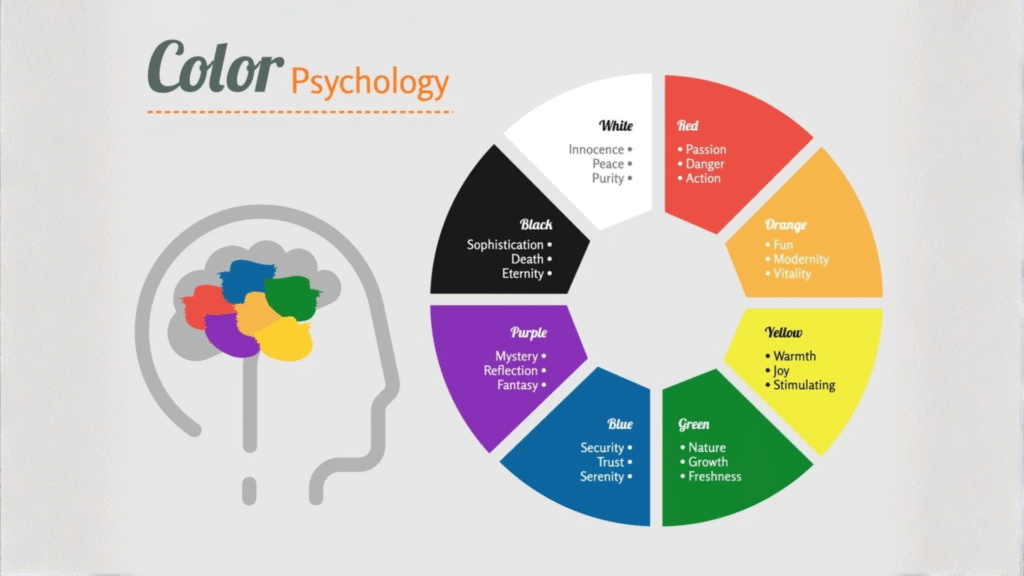
Colors are far more than mere visual experiences—they are powerful psychological forces that influence our emotions, behaviors, and even our physical responses. From the moment we open our eyes each morning to the last thing we see before sleep, colors silently shape our moods, guide our decisions, and affect our well-being. Understanding color psychology reveals how these vibrant wavelengths of light create profound connections between our external environment and internal emotional landscape.
What is Color Psychology?
Color psychology is the scientific study of how different colors affect human behavior, emotions, and perceptions. This field recognizes that colors possess the power to evoke specific feelings, influence mood, and shape decision-making processes. Research has shown that up to 90% of an initial impression comes from color, and color can increase brand recognition by up to 80%.webmd+3
The foundation of color psychology rests on six basic principles: colors carry specific meanings, these meanings are either learned or biologically innate, color perception triggers automatic evaluation, this evaluation forces color-motivated behavior, color usually exerts its influence automatically, and color meaning depends heavily on context.wikipedia
Colors affect us through three primary pathways: biologically (such as red triggering fear responses), culturally (where red symbolizes wellbeing in many Eastern societies), and personally through individual experiences and associations. This multifaceted nature means that while some color responses are universal, others vary significantly across cultures and individuals.interaction-design
The Science Behind Color Perception
Color is a visual sensation created when light enters the eye and is processed by the brain. Different colors have different wavelengths, which affect how the brain perceives them. Warm colors like red and orange have longer wavelengths and are perceived as energizing and stimulating, while cool colors like blue and green have shorter wavelengths and are perceived as calming and relaxing.thepapermillstore+1
Isaac Newton’s groundbreaking experiments in the 17th century led to the creation of the first color wheel, demonstrating that white light comprises multiple colors. In 1810, Johann Wolfgang von Goethe published “The Theory of Colors,” which was the first work to deeply examine the psychological effects of colors on human emotions, opening the door for modern color psychology.webmd+1
Research at the University of Rochester and the University of Munich found that when students saw the color red before taking a test, it impaired their performance. Since red ink is traditionally used for marking errors, the color became associated with mistakes and failures, demonstrating how color can create negative emotions even without conscious awareness.looka
Warm Colors: Energy and Vitality
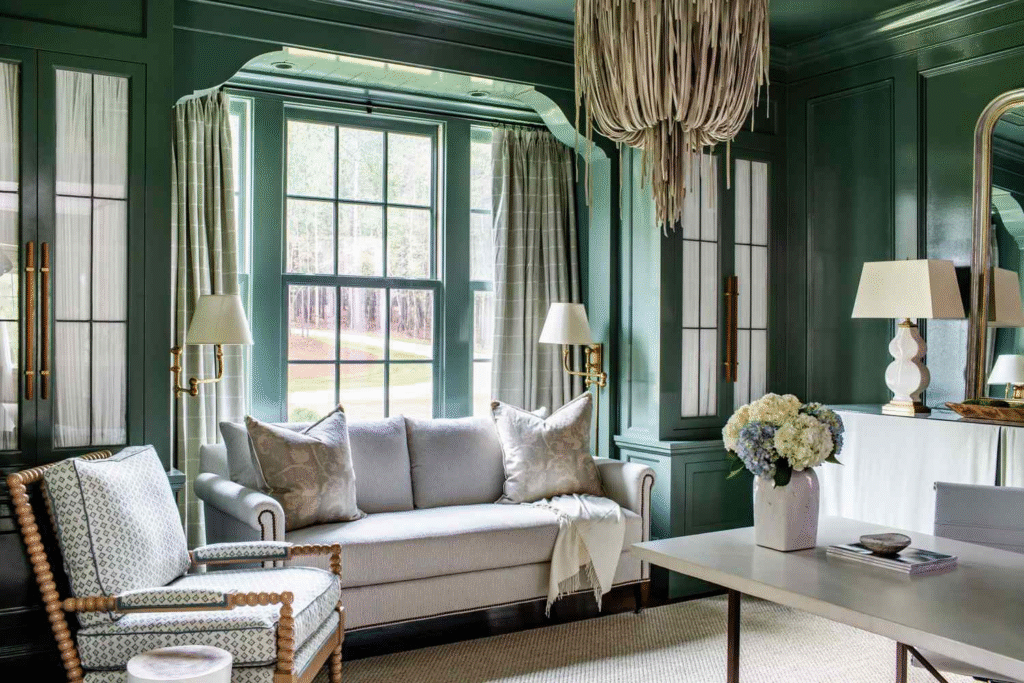
A living room with deep green walls and neutral-toned furniture creating a calm and inviting atmosphere southernliving
Warm colors range from shades of red to yellow and include oranges, browns, and golden hues. These colors are considered “active” because they appear to advance from the page and create feelings of warmth, energy, and comfort. In design contexts, warm colors are frequently used to convey messages of happiness, enthusiasm, and excitement.thepapermillstore+2
Red stands as the most vibrant and attention-grabbing color, representing energy, passion, action, ambition, and determination. It instantly stimulates the senses and can increase heart rate and stimulate appetite, which is why it’s commonly used in restaurant decor and food packaging. However, red also carries negative connotations including aggression, danger, and anger. Companies like Coca-Cola use red to portray high energy and positivity.looka+6
Orange combines the energy of red with the cheerfulness of yellow, creating a sense of warmth, optimism, friendliness, and enthusiasm. It has been shown to stimulate happiness and mental activity. While Western cultures associate orange with autumn and harvest, Middle Eastern cultures link it to mourning, and Eastern countries connect it with love, happiness, and good health.skillshare+3
Yellow is the color of optimism, joy, happiness, and mental stimulation. It enhances mood, boosts creativity, and creates a sunny atmosphere. Lighter shades work well in kitchens and breakfast areas, while softer hues suit workspaces. However, yellow also carries negative associations—in Egypt and Latin America, it’s linked to death and mourning, while in Germany, it symbolizes envy and jealousy.verywellmind+5
Cool Colors: Calm and Tranquility

A stylish room showcasing the psychological impact of color, combining bold red walls with calming blue and green furniture accented by gold decor visionaryhomes
Cool colors include blues, greens, purples, and their variations. These hues create a sense of calm, relaxation, and spaciousness, often linked to water, sky, and nature. Cool colors are particularly effective in reducing stress and anxiety, making them ideal for relaxation areas.almadeluce+2
Blue is universally perceived as positive across most cultures. It symbolizes trust, loyalty, professionalism, calmness, and security. Research shows that blue can reduce stress, promote serenity, and even improve sleep when used in bedrooms. The color blue has also been associated with healing properties, which is why it’s commonly used in hospitals and healthcare settings. Companies like IBM and Facebook use blue to build trust and loyalty with their audiences. In Greece, blue represents national pride; in Ukraine, good health; and in Israel, holiness.looka+7
Green represents nature, growth, harmony, freshness, and balance. It has been found to have a soothing impact on physical discomfort—viewing green scenery or being in a green-painted room can help alleviate pain and promote relaxation. However, green’s meanings vary dramatically across cultures. In Western countries, it’s associated with environmental consciousness and luck, but in Indonesia, it’s considered a forbidden color representing exorcism and infidelity. In China, the expression “wearing a green hat” means a man is being cheated on by his wife.verywellmind+4
Purple evokes mystery, spirituality, luxury, creativity, and wisdom. It combines the stability of blue with the energy of red, creating associations with royalty and sophistication. Purple can improve an individual’s creativity and spiritual state, though it can also be seen as impractical. Cultural interpretations vary—in Japan, purple symbolizes evil and infidelity, while in China, South Korea, and Japan, it represents high quality and trustworthiness.empower-yourself-with-color-psychology+6
Cultural Variations in Color Meaning
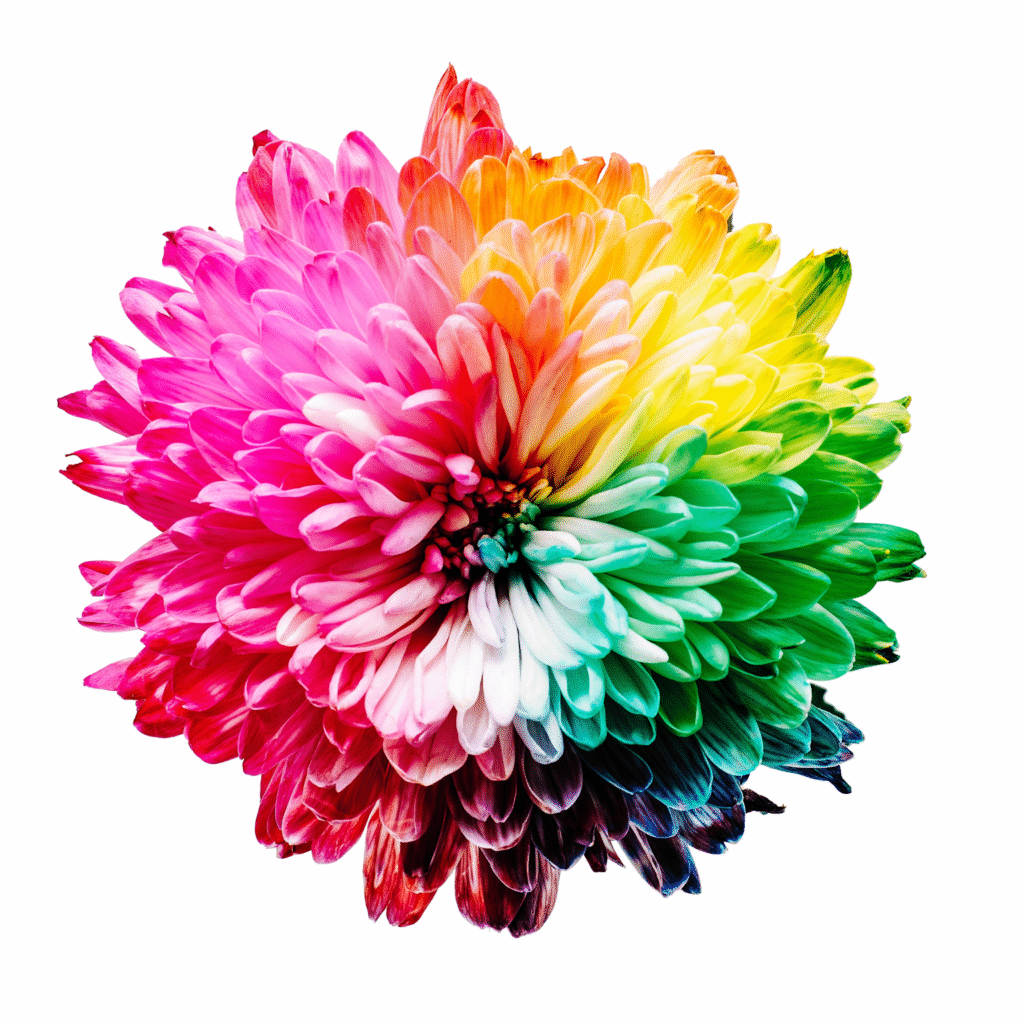
A multicolored flower illustrating the spectrum of colors used in color therapy and their psychological impact annafreud
Color meanings shift dramatically across different cultures, making cultural awareness essential for global communication and design. What represents joy in one culture might symbolize mourning in another.bergerpaints+3
White presents stark cultural contrasts. In Western cultures, it represents purity, peace, and innocence—the traditional color of wedding dresses. However, in Eastern and Asian cultures, white is the color of death, worn at funerals to depict grief and mourning. In Iran, white signifies holiness and peace, while in Egypt, wearing white indicates high social status.skillshare+2
Black is viewed as elegant and sophisticated in Western high fashion, yet it universally represents death and mourning across most cultures. Eastern countries view black as a sign of wealth and prosperity, while Japan sees it as a feminine color—deep, mysterious, and alluring. In Thailand, black is associated with bad luck.wikipedia+2
These cultural differences extend to marketing and branding. The traditional Chinese bridal color is red, symbolizing celebration and prosperity, while Western brides wear white. Understanding these variations prevents miscommunication and ensures appropriate color choices in international contexts.russell-collection+1
Color Psychology in Marketing and Branding

Color psychology plays a crucial role in how consumers perceive brands and make purchasing decisions. Research shows that 93% of consumers make purchasing decisions based on visuals alone, and color can increase brand awareness and recognition by 80%.ignytebrands+2
Different industries strategically employ specific colors to convey desired brand messages. Financial institutions like Barclays, PayPal, and American Express incorporate blue in their logos to reflect credibility, professionalism, and trust. Luxury brands such as Chanel, Rolex, and Bentley favor black to convey sophistication and exclusivity. Fast-food restaurants often use warm colors like red and orange to stimulate appetite and create energizing environments.looka+2
The appropriateness of a color to a brand’s message matters more than the color’s general associations. When consumers perceive a color as congruent with a brand’s identity, they respond more positively. This explains why subverting expectations can also be effective—using unexpected colors helps brands stand out and increase memorability.hubspot+2
Color Psychology in Interior Design and Architecture
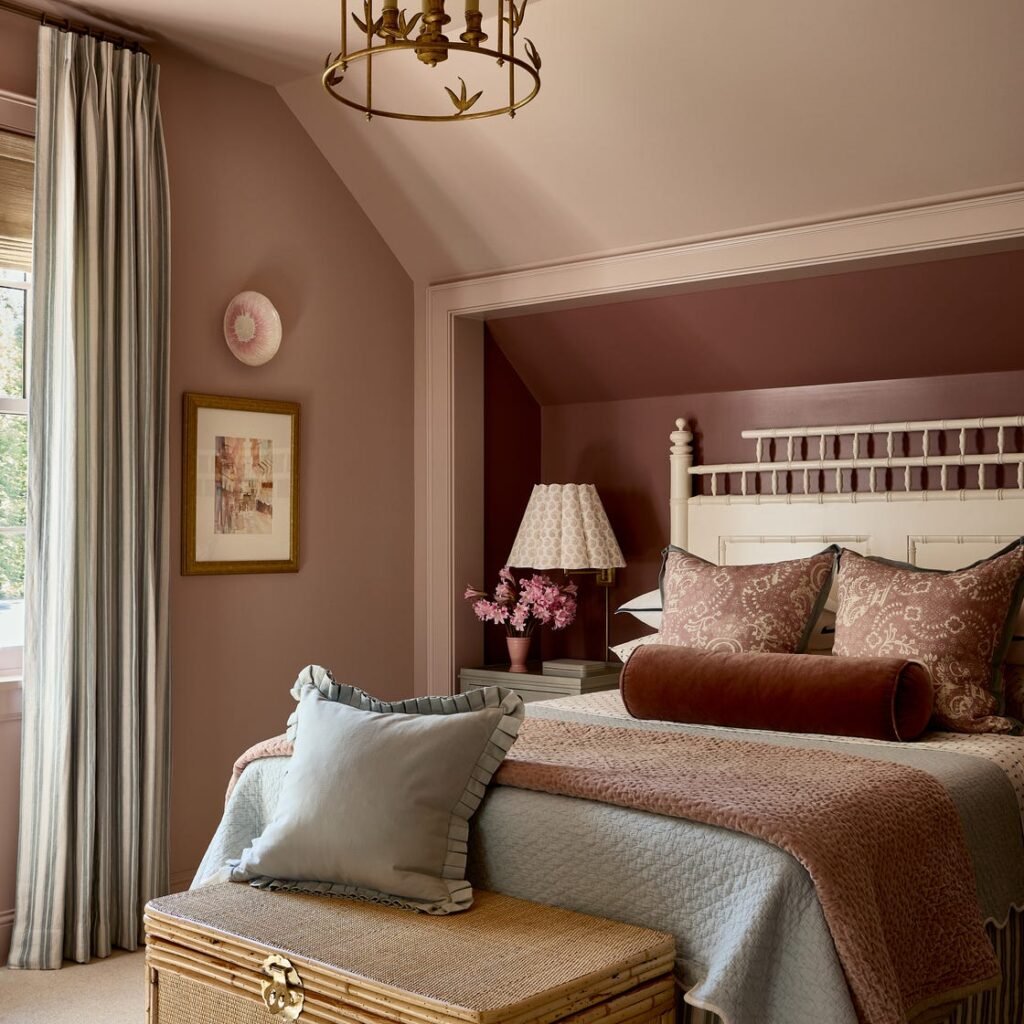
The strategic use of color in interior spaces can profoundly influence mood, behavior, and even physiological responses. Different colors serve distinct purposes depending on the room’s function and desired atmosphere.schoolofdesign.dpu+3
Warm colors work best in high-energy social spaces. Deep orange and red add warmth and excitement to entryways, kitchens, and playrooms, creating vibrant and welcoming environments. Red in living rooms stimulates conversation and friendship, while in bedrooms, it kindles feelings of love and passion—though it should be balanced with calming tones like white or beige to prevent overstimulation.jswpaints+1
Cool colors promote relaxation and are ideal for bedrooms, bathrooms, and workspaces. Blue reduces stress and enhances focus, making it perfect for home offices. Green creates serene atmospheres in bedrooms, promoting restful sleep. However, excessive cool tones can make spaces feel unwelcoming, so balance with warmer accents is essential.almadeluce+3
Lighter colors make rooms feel more spacious, open, and airy, while darker colors create intimacy and coziness. This principle allows designers to manipulate spatial perception through strategic color application.foyr+1
Color Therapy and Health Applications
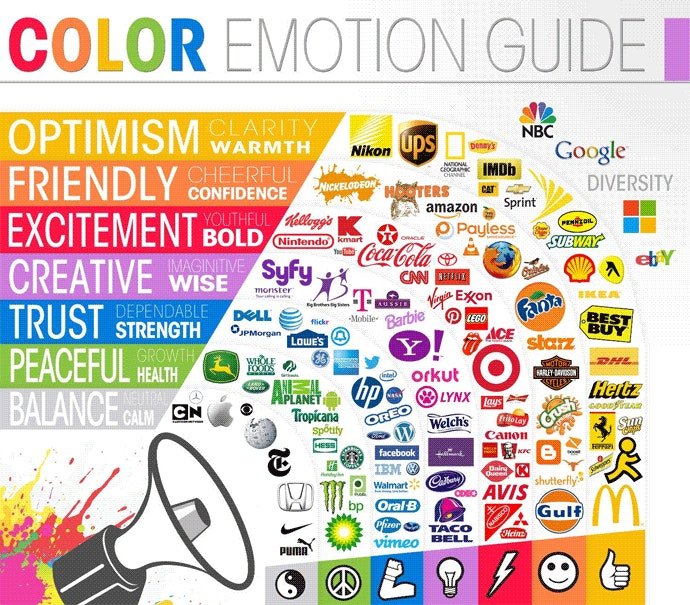
Color therapy, also known as chromotherapy, uses colors to influence physical and mental health. While considered complementary medicine, research supports several therapeutic benefits.webmd+3
Pain reduction: Green has been found to have a soothing impact on physical discomfort, with patients viewing green scenery or in green rooms experiencing pain relief.calm
Sleep improvement: Dark blue and soft green in bedrooms create calming ambiances conducive to restful sleep. These colors lower stress levels and prepare the mind for rest.calm
Enhanced focus: Bright colors like yellow have uplifting effects that increase alertness and concentration, making them ideal for study areas.calm
Stress and anxiety reduction: Blue and green effectively reduce stress and anxiety, serving as cornerstone colors in therapeutic environments.insightfulcounselling+2
Mood enhancement: Cheerful colors like yellow uplift spirits, while calming blues and greens soothe and relax the mind. Color therapy for patients with generalized anxiety disorder showed significant reductions in anxiety and improvements in positive emotions when coloring therapy was added to conventional treatment.pmc.ncbi.nlm.nih+2
Emotional Responses and Individual Differences
While color psychology provides general guidelines, individual responses to color vary based on personal experiences, gender, and cultural background. Studies show that both men and women prefer blue over other colors, but men demonstrate the strongest preference for this hue. Women perceive more colors and have greater awareness of differences among colors than men do.verywellmind+1
Personal experiences shape color associations throughout life. From a young age, children develop associations with colors based on their environment and cultural teaching. Language also shapes color perception—a Candoshi child in Peru doesn’t use color words at all, comparing objects to fruits or flowers instead, while English-speaking children can distinguish between “moss” and “sage”.looka
Some individuals experience synesthesia, an extraordinary perceptual phenomenon where emotions automatically trigger visual experiences of color. In emotion-color synesthesia, different emotions consistently evoke specific colors—for instance, one person might see blue when happy, magenta when experiencing negative emotions, and various shades of pink when feeling loved. This condition offers remarkable insights into the mechanisms of perception, emotion, and consciousness.pmc.ncbi.nlm.nih+2
Practical Applications and Recommendations
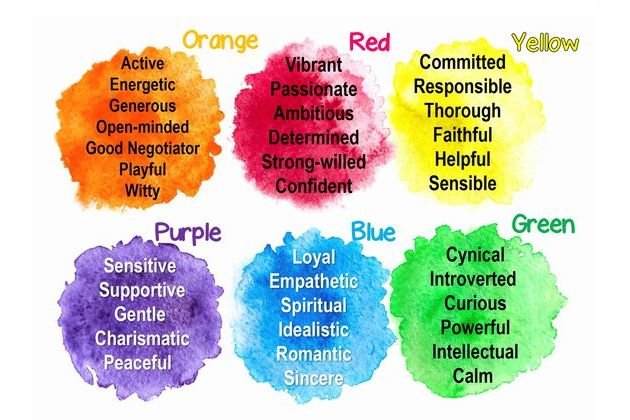
Understanding color psychology empowers better decisions in multiple life domains. When choosing colors for personal spaces, consider the room’s function and desired emotional atmosphere. Use warm colors in social areas to encourage interaction and energy, and cool colors in private spaces to promote relaxation and rest.jswpaints+1
For professional branding and marketing, research your target audience’s cultural background and preferences before selecting colors. Test color choices with focus groups to ensure appropriateness and effectiveness. Remember that standing out through unexpected color choices can be as effective as following traditional associations.hubspot+2
In therapeutic contexts, incorporate calming colors like blue and green to reduce stress and anxiety. Use brighter colors like yellow to boost energy and mood, and consider color therapy as a complementary approach to conventional treatments.insightfulcounselling+4
The psychology of colors demonstrates that these vibrant wavelengths of light are far more than aesthetic choices—they are powerful tools that shape our experiences, influence our behaviors, and affect our well-being. By understanding how colors work on psychological, cultural, and biological levels, we can harness their power to create environments that support our emotional needs, communicate effectively across cultures, and enhance our overall quality of life.looka+3
